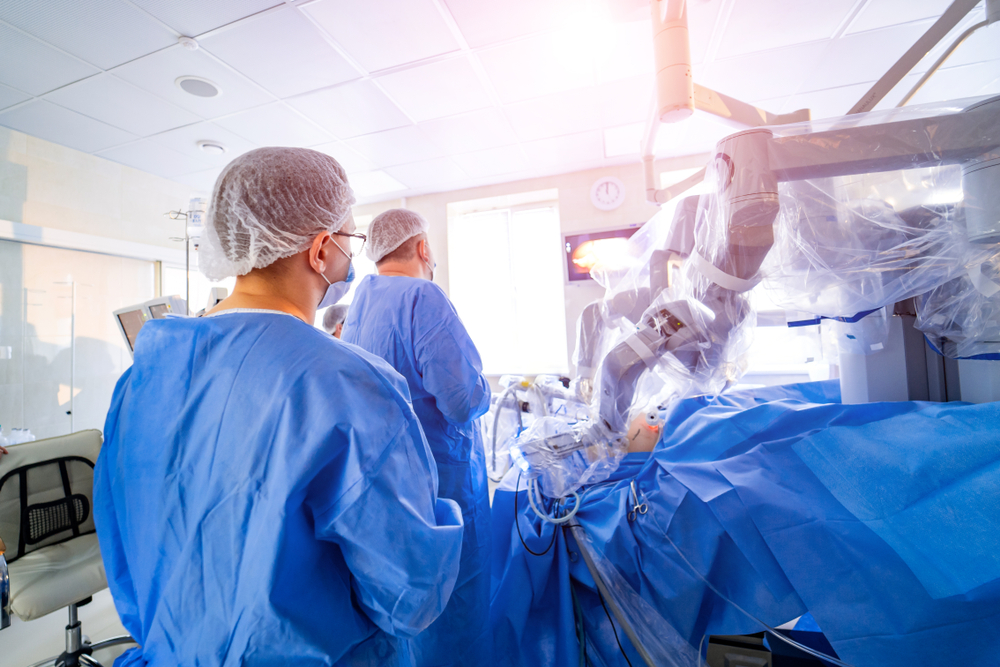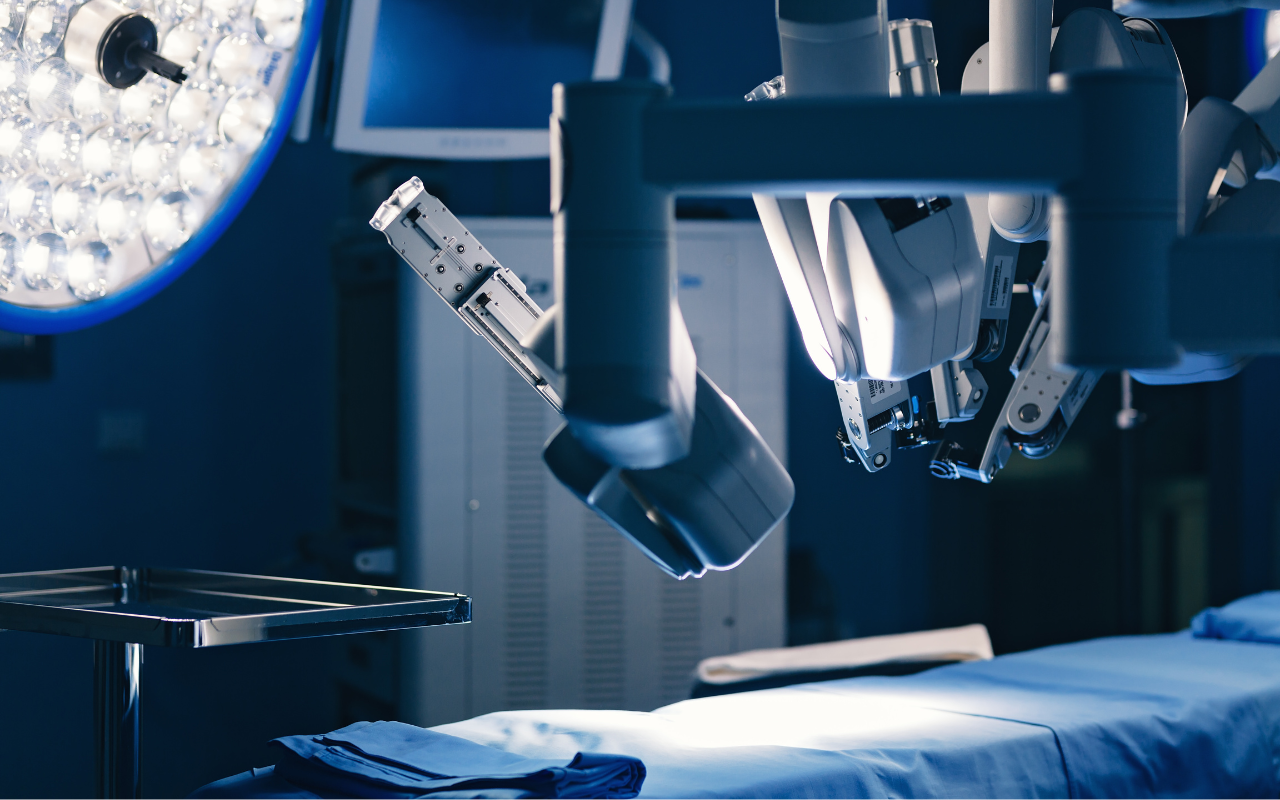The surgical field is on the cusp of reinvention but whether robots will take over all operating theatres in the next decade is up for debate.
Robotic surgery has been around in Australia since 2003 and has primarily been performed in the private sector in the specialties of urology and gynaecology.
According to Honorary Professor at the Department of Surgery at the University of Melbourne and robotic surgery advocate Professor Anthony Costello, it’s seen incredible growth overseas.
“It is rapidly taking over in the US,” Professor Costello told InSight+. “Things like gallbladder surgery, appendixes, small bowel surgery, bariatric, lung cancer surgery in the US are now done robotically.”
However, it hasn’t quite had the same uptake in Australia and there are many reasons for this. According to Professor Costello, there’s been a reluctance to change.
“There’s an entrenched conservatism in medicine and surgery and change is painful,” Professor Costello said.
“Say you’re a surgeon who’s been practising for 20 years and this fancy new machine comes along, then you have to relearn when you’re in private practice. It’s going to be difficult for you to swap over.”

A lack of robotics training
Part of this difficulty has been a lack of training opportunities, which has mostly been from robot vendors. According to the Royal Australasian College of Surgeons (RACS) Censor-in-Chief Dr Adrian Anthony, the College hasn’t offered robotic surgical training until recently.
“You could argue that the College has been maybe a little bit slow in having a presence in surgical training and robotic surgical training,” Dr Anthony said.
“But I think that’s primarily a reflection of it being a new technology [with] not a great deal of penetrance until now.”
Professor Costello’s concern is that Australian surgeons are being left behind.
“At the present time, we don’t have fit for purpose training because there’s no robotics in our training,” Professor Costello said.
“So, what happens is the surgeons will finish their five- or six-year training and then have to go and learn how to use the technology, which is a much different way of operating. That’s my concern,” he said.
However, Dr Anthony disagreed.
“It’s fit for purpose for the current situation but may not be fit for purpose in a few years’ time when robotic surgery becomes a lot more prevalent, because it’s already becoming prevalent,” Dr Anthony said.
“What we are finding is that surgical graduates are starting to feel as though they’re not quite up to speed with the requirements around robotic surgery. And they are not able to offer their patients the gold standard care if it is defined by robotic surgery because they do not have that in their training.”
The RACS has now partnered with the robotics training group IMRA (International Medical Robotics Academy), founded by Professor Costello, and is running a series of trainings for interested surgeons. They’re also looking at the surgeon’s journey to work out where on that journey robotic surgery should be incorporated.
“The enthusiasts of robotic surgery would say, ‘you need to train trainees now, it’s going to be ubiquitous, and the majority of procedures are going to be robot-based’. And I think the reality is not quite like that,” Dr Anthony said.
I think the reality is that for each specialty, there will be defined procedures and pathologies that would be appropriate to be managed through a robotic platform. But exactly what those procedures are, and how often someone would be called to use robotic surgery in that setting, still really needs to be determined,” he said.
“There’ll be some fundamental aspects of training, some theoretical knowledge and some basic principles that can easily be taught very early in surgical training or maybe even before someone gets into surgical training.
“Then there are the psychomotor skills and the professional skills around situational awareness etc that can be developed during training. And then beyond that, the actual procedures might overlap with the end of training with someone who has qualified in their post-Fellowship years.”
“Even if we said let’s make this part of surgical training for all our junior doctors, we wouldn’t be able to deliver on that requirement, because very few robotic surgeries occur in the public sector,” he said.
Public hospital access
Access to surgical robots has not been equal, since the machines are expensive and the market has been dominated by one provider, the DaVinci Surgical System.
Professor Costello says that situation is changing.
“They’re now much cheaper. There has been a lot of competition in the market making cheaper platforms of robotics, allowing a lot more dissemination of robotic surgical technology,” Professor Costello said.
That’s where RACS has a role, Dr Anthony said.
“If there is a standard of care that is determined by robots then, as a College, we would be advocating that standard of care be available to all public patients. Not just in metropolitan Australia, but also in regional and rural Australia because there’s no reason why robotic surgery cannot be done outside of metropolitan areas,” he said.
The College is also working on developing credentialing guidelines around which surgeons are most suitable to train.
“So hospitals have a framework to go [to] that is reliable about the qualification and the safe practice of a surgeon in robotic surgery,” Dr Anthony said.
“What we haven’t got is the information to go to governments to say you need to put a robot here, here and here because we’re still trying to understand what is the role of robotic surgery against each of the specialties — orthopaedics, neurosurgery, paediatric surgery, general surgery.”
Professor Costello said there is a lot of evidence out there already.
“There’s so much evidence,” Professor Costello said.
“The self-evident truth is what I talk about. If you’ve got a patient who has an equivalent surgeon who makes a 12-inch abdominal incision and loses 1.5 litres of blood, take the prostate out and the patient stays in the hospital five days, runs the risk of a wound infection and is off work for six weeks. You take the same patient and give them the same operation robotically, same surgeon, no blood loss, back to work in two weeks, no abdominal incision. What would you take?”
After a slow start, robotic surgery looks like it’s finding its feet in Australia.
“Watch this space. There is a lot of work that needs to happen,” Dr Anthony said.
Subscribe to the free InSight+ weekly newsletter here. It is available to all readers, not just registered medical practitioners.

 more_vert
more_vert
The problems with robotic surgery will be costs, availability outside major centres, training of staff and technicians, and too many surgeons ‘dabbling’ rather than smaller numbers gaining wide experience then efficiently and safely training others. What can be achieved for complex techniques in the best hands does not always translate to general usage. Laparoscopic surgery gained wide and rapid acceptance because there were clear and readily demonstrated advantages in avoiding large incisions, the learning curves for surgeons and theatre staff were readily managed and equipment was affordable for smaller hospitals. And, quite apart from the costs and logistics etc, I don’t see any major advantage for robotic surgery other than in procedures where surgical access in a confined space is the prime issue.
Costello is being disingenuous when he compares a robotic prostatectomy to “a 12 inch inch incision with 1.5 litres blood loss”. A good operator can do a suprapubic prostatectomy with a small transverse incision and minimal blood loss – that is a fairer comparator.
I think a skilled laparoscopic surgeon can readily transfer those skills to robotic surgery. The question (which needs to be proven in each discipline) is whether the clinical benefits of robotic surgery warrant the costs.
How would you prefer your prostate to be removed? I’ve no doubt I’d choose the robotic option. If you’re in doubt then you haven’t seen patients languish in hospital after a radical open prostatectomy. Pain control is an issue, mobility is poor, and hence respiratory complications, and thrombotic events are higher. At twelve months the rate of cancer recurrence, incontinence, and erectile dysfunction may not be dissimilar, but the patient experience is vastly superior with robotic surgery.
The role of robots is not clear. The slow uptake I suspect is related not just cost but lack of evidence for safety or efficacy not even considering cost.
I think it’s self evident that a patient losing 1.5 litres of blood is not going to do as well as one with ‘no’ blood loss regardless of approach. The issue is blood loss not approach. Please note the no blood loss isn’t quantified, the 12 inch incision likely an exaggeration, the risk of wound infections not properly compared and lastly lack of evidence for earlier return to work and it’s relevance in a population not usually working nor was short or long term other outcomes mentioned.
As in other areas, higher rate bile duct injuries, no clear benefits in hernias; the promise doesn’t necessarily live up to reality. It is not self evidently better.
I accept its being done more and more and potentially the future but sadly it’s also being heavily promoted by self interested surgeons and manufacturers, often with at best interesting claims.
Let’s have open and frank discussions of pros and cons not marketing strategies.
I agree with Anonymous-it doesn’t seem as if there are the amount of benefits with robotic surgery, to justify the massive costs, especially when there is a crisis in funding throughout medicine.
So many beneficial treatments have been cut back due to not meeting the cost benefit for bean counters.
I might be convinced that that there is a benefit, the day that surgeons start to contribute towards paying for these machines, instead of hospitals coughing up massive costs. Until that day, it’s just a shiny brand new toy.
I haven’t seen any real cost savings for hospitals- but if you have data to show that these machines have saved millions for hospitals, I’d love to take a look at it.
The added difficulty is that trainees still need to learn the basic older techniques for when open surgery is required.
Granted robotic surgery is the way of the future but cannot be used for all patients same operation.
Many of the younger trainees have the advantage that they already have developed computer techniques in gaming relevant to robotic surgery.
New computer techniques can enable the trainee to learn all robotic techniques on a simulator without touching a patient. This is not far removed from using the robot in theatre when you are seated at a console anyway. These simulator techniques can be added to all public hospitals at less expense than the actual robot and do not take up theatre time.
There is also another very good reason. There is a distinct paucity of evidence that robotic surgery produces better outcomes in many of the areas it is currently used in. For example, robotic prostate surgery shows no better outcomes in tumor progression, or continence afterwards, the two big claimed benefits. Even hospital stay is only marginally shorter, and even then it’s barely significant. The only proven long term benefit appears to be to the surgeon’s bank balance.
In the era of GPS, a good navigator still needs to be proficient in the use of a sextant. A robotics surgeon will still perform open surgery when the need arises. The lessons learned in the evolution of endoscopic surgery I am sure will apply to robotics. I once complimened a senior surgical colleague who had re-trained to be a very skilled endoscopic operator. His response, “The next generation will be even better. They began training for this joystick surgery in infancy on their games and smart phones”.